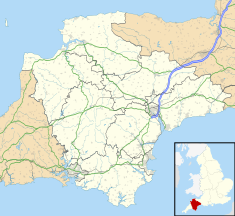
Exmouth is a port town, civil parish and seaside resort, sited on the east bank of the mouth of the River Exe and 11 miles (18 km) southeast of Exeter.

The Royal Courts of Justice, commonly called the Law Courts, is a court building in Westminster which houses the High Court and Court of Appeal of England and Wales. The High Court also sits on circuit and in other major cities. Designed by George Edmund Street, who died before it was completed, it is a large grey stone edifice in the Victorian Gothic Revival style built in the 1870s and opened by Queen Victoria in 1882. It is one of the largest courts in Europe. It is a Grade I listed building.

Tiverton is a town and civil parish in Devon, England, and the commercial and administrative centre of the Mid Devon district. The population in 2019 was 20,587.
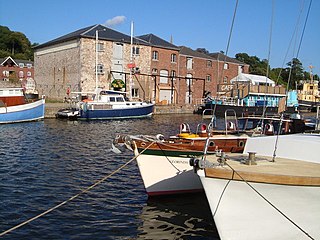
The Exeter Ship Canal, also known as the Exeter Canal is a canal leading from the River Exe to Exeter Quay in the city of Exeter, Devon, England. It was first constructed in the 1560s predating the "canal mania" period and is one of the oldest artificial waterways in the UK.

Heavitree is a historic village and former civil parish situated formerly outside the walls of the City of Exeter in Devon, England, and is today an eastern district of that city. It was formerly the first significant village outside the city on the road to London. It was the birthplace of the librarian Thomas Bodley, and the theologian Richard Hooker, and from the 16th century to 1818 was a site for executions within what is now the car park of the St Luke's Campus of the University of Exeter.

Powderham Castle is a fortified manor house situated within the parish and former manor of Powderham, within the former hundred of Exminster, Devon, about 6 miles (9.7 km) south of the city of Exeter and 1⁄4 mile (0.4 km) north-east of the village of Kenton, where the main public entrance gates are located. It is a Grade I listed building. The park and gardens are Grade II* listed in the National Register of Historic Parks and Gardens.

Rougemont Castle, also known as Exeter Castle, is the historic castle of the city of Exeter, Devon, England. It was built into the northern corner of the Roman city walls starting in or shortly after the year 1068, following Exeter's rebellion against William the Conqueror. In 1136 it was besieged for three months by King Stephen. An outer bailey, of which little now remains, was added later in the 12th century.

The Avocet Line is the railway line in Devon, England connecting Exeter with Exmouth. It was originally built by the London and South Western Railway, and was historically known as the Exmouth branch railway. The line follows the Exe Estuary for about half of its route, from just outside Topsham to Exmouth, giving views of the estuary. The line is named after the pied avocet, which lives in the estuary.

Topsham is a town in Devon, England, located on the east side of the River Exe, immediately north of its confluence with the River Clyst and the former's estuary, between Exeter and Exmouth. Topsham is a historic port and was designated a town by a 1300 royal charter granted by Edward I; it was formally amalgamated into the City of Exeter in 1966. The population of the town, recorded at the 2021 census, is 4,146.
Charles Fowler was an English architect, born and baptised at Cullompton, Devon. He is especially noted for his design of market buildings, including Covent Garden Market in London.

Torre Abbey is a historic building and art gallery in Torquay, Devon, which lies in the South West of England. It was founded in 1196 as a monastery for Premonstratensian canons, and is now the best-preserved medieval monastery in Devon and Cornwall. In addition to its medieval and Georgian rooms, Torre Abbey is known for the formal gardens on Abbey Park and Meadows, for the third largest art collection in the county of Devon and for regular exhibitions by contemporary artists.
South Molton is a town and civil parish in Devon, England. It is part of the North Devon local government district. The town is on the River Mole.
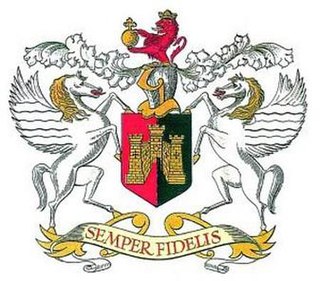
Exeter City Council is the local authority for Exeter, a non-metropolitan district with city status in Devon, England.

Countess Wear is a district within the city of Exeter, Devon, England. It lies about two miles south-east of the city centre, on the north bank of the estuary of the River Exe. Historically an estate known as Weare, part of the manor of Topsham, was in this area. From the late 13th century, the construction of weirs in the River Exe by the Countess, and later, the Earls of Devon damaged the prosperity of Exeter to the benefit of Topsham which was downstream of the obstructions, and was owned by the Earls.
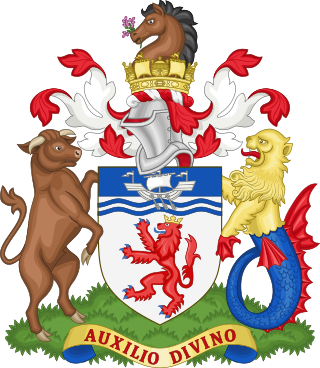
Devon County Council is the county council administering the English county of Devon. Based in the city of Exeter, the council covers the non-metropolitan county area of Devon. Members of the council (councillors) are elected every four years. Almost all councillors are members of the major national political parties.

Exeter Guildhall on the High Street of Exeter, Devon, England has been the centre of civic government for the city for at least 600 years. Much of the fabric of the building is medieval, though the elaborate frontage was added in the 1590s and the interior was extensively restored in the 19th century. It is a Grade I listed building.

There are three local archives covering the historic county of Devon, England. The Devon Heritage Centre in Exeter is the main archive. It has a branch office, the North Devon Record Office in Barnstaple, which is the repository for records broadly relating to North Devon. Since 2014 the joint service has been run by the South West Heritage Trust under the name of the Devon Archives and Local Studies Service.
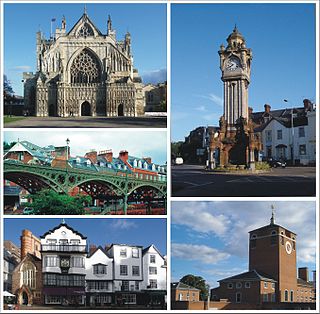
Exeter is a cathedral city and the county town of Devon, South West England. It is situated on the River Exe, approximately 36 mi (58 km) northeast of Plymouth and 65 mi (105 km) southwest of Bristol.
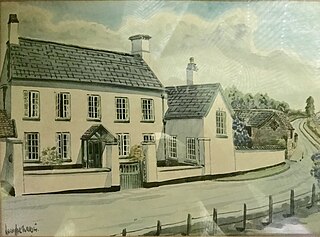
Gulliford Farm is a Grade-II listed farmhouse in East Devon, between Exmouth and Topsham. It is situated in the village of Exton, in the parish of Woodbury. The main residential building dates to the 16th century with later Georgian and Victorian additions.

Great Torrington Town Hall is a municipal building in the High Street, Great Torrington, Devon, England. The town hall, which is the meeting place of Great Torrington Town Council, is a Grade II listed building.

